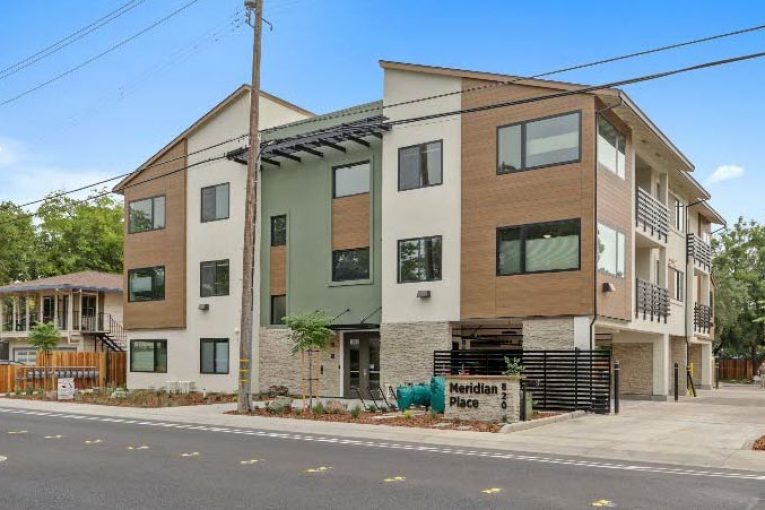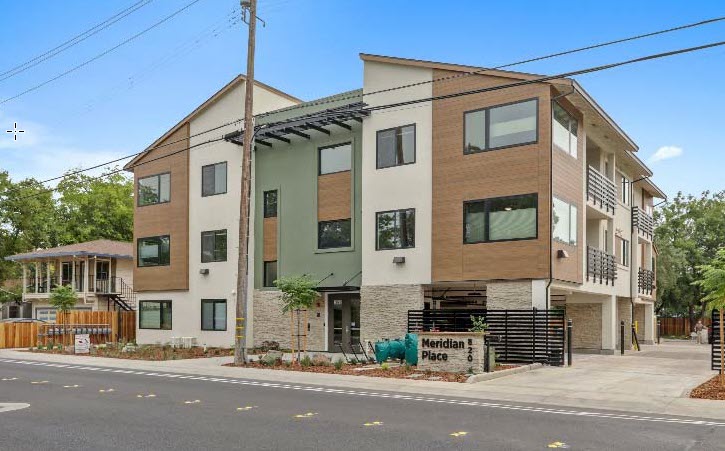

By David M. Greenwald
Those who are hopeful that local RHNA (Regional Housing Needs Allocation) requirements will be reined in have cited the fact that there cities are pushing back against the RHNA numbers.
One article, from January in the Orange County Register, was cited in particular.
“Faced with housing goals they say are unachievable and a fall deadline to plan for them, more Southern California cities than ever before are fighting to have their allocations of new homes rolled back,” the OC Register reported on January 9.
City leaders, the paper reports, “say the 1.34 million new units assigned to the six-county area (including Los Angeles, Orange, Riverside and San Bernardino counties) is wildly overinflated, and there’s no place in their communities to shoehorn the hundreds or thousands of additional homes they’re currently mandated to put in their plans.”
However, as is often the case, the commenter did not do any follow-up research on this. If they would have, they would have found that, as the San Francisco Chronicle reported this weekend, “Earlier this year, 47 cities and counties in Southern California appealed their allocation numbers. All the appeals were rejected. So far the courts have tossed out lawsuits filed against the  state housing agency by jurisdictions objecting to their RHNA number.”
state housing agency by jurisdictions objecting to their RHNA number.”
The problem is that California is facing a housing crisis and one of the reason for that crisis has been the failure of local jurisdictions to adequately plan and build housing.
The same thing is happening in Northern California as well, but a report Saturday in the San Francisco Chronicle, finds that protests are unlikely to be successful.
“Cities across the Bay Area are howling in protest over the ambitious housing production goals the state has imposed on them,” the Chronicle said. “But in a California political environment where the housing affordability crisis ranks at the top of the agenda, it’s unlikely that any of the protests will gain a sympathetic ear in Sacramento, according to experts.”
The Department of Housing has determined that 441 thousand housing units need to be produced by 2030, which is more than double the current RHNA cycle has allocated.
The report notes: “Some 28 Bay Area cities and counties have appealed the state’s efforts to dictate how much housing they will be required to approve over the next eight-year cycle — known as RHNA goals — citing everything from wildfire to flooding to a shrinking jobs base in their argument as to why they should not be on the hook for so much residential development.”
The Chronicle notes: “In many of the appeals the gap is extreme between the state’s mandated number and what the local jurisdiction thinks is fair and realistic. Sausalito, for example, is asking for an 83% reduction. Dublin, Danville, San Anselmo, Pleasant Hill and Ross are all looking for a decrease of more than 50%.”
Michael Lane, state policy director for the urban think tank SPUR, said he believes that all of these appeals or at least most of them will be rejected.
“I think it’s a political exercise as much as anything, to show the residents they are fighting,” Lane said.
“We are seeing the usual attempts to shift the burden on housing to lower-income communities and it’s not working this time around,” Lane said. “If you read the list of appellants it’s like a who’s-who of elite country club communities.”
Lane makes several critical points here.
First, the very communities whose practices led to this housing crisis are the very communities that are fighting this. That should come as no surprise. And it also should come as no surprise that, if they succeed, then California will never solve the housing crisis.
Second, the fight against new housing is being led primarily by people who already own their homes. Many of them have owned homes for decades—purchased at far lower prices than the market bears today.
I thought the most ironic comment of the week was from a poster who said: “And some wonder why people prefer single family homes to living in dense multi-stories with randos.”
This was with respect to a different issue but it illustrates the divide. Of course people, especially families, would personally prefer to live in single-family homes to dense multi-family housing. The problem isn’t preference—it’s ability to afford that kind of housing.
The cost of that housing has priced even relatively well-off families out of the housing market. And these kinds of policies and fighting new housing that would alleviate supply issues continue to lock in the problem.
One thing that is unique about the housing crisis—it really does have to be solved at the local level. The state can attempt to create incentives to build new housing. The state can attempt to sanction communities that fail to build adequate housing. But at the end of the day, local jurisdictions hold the key.
The housing crisis, unlike most problems in government today, must be addressed at the local level and someone is going to have to have to make uncomfortable choices. Otherwise, just throw your hands up on this.
As the Chronicle points out: “The difference is that this time around there is an awareness that two decades of underproduction of housing is making California unsustainable.”
“There is a reckoning in terms of all the housing we didn’t build over the last two decades,” Lane said. “The Legislature and the governor has gotten serious.”
We will see on that score.
—David M. Greenwald reporting







“The difference is that this time around there is an awareness that two decades of underproduction of housing is making California unsustainable.”
You mean since Measure J passed.
https://gifimage.net/wp-content/uploads/2017/10/broken-record-gif-1.gif
I guess that awareness in Davis remains lacking.
True. But even a broken record is right twice a day.
Not sure the mixed metaphor works this time.
Not sure not being sure works this time . . . or ever.
Maybe the mixed metaphor doesn’t work but it’s still funny.
Alan is one of the reasons I read the Vanguard.
Attempts to rein in the #’s will fail while bureaucrats in Sacramento reign.
Good point Bill, maybe it’s time for CA voters to “rain” on the Democrat run parade.
Republicans oppose housing?
That wasn’t my point… someone “got it” and corrected…
I’m honored that David would pay such close attention to one of my lesser emphasized comments. Don’t you think it’s kind of professionally odd to call out your commenters on the internet to research their comments? I mean sure if you want challenge the comments; great but calling out commenters seems kind of bush league for someone that is supposedly a professional journalist….ie..it’s YOUR JOB to research the topics of conversation. I’m starting to think I’ve hurt David’s feelings.
As for research; yeah I’m aware of the ruling you provided in your link. But the fight isn’t over. Here are articles all dated AFTER the one about the ruling he cited about on going challenges and appeals by CA cities.
Palo Alto set to appeal regional housing allocation
Pleasanton council to consider appealing potential regional housing allocation
Coronado: 4 Cities Appeal Ruling On SANDAG Process
A challenge to housing goal?
The County of Marin is appealing the assigned number of new homes it must create in unincorporated areas through 2030 as directed by the Association of Bay Area Governments[External] (ABAG).
Danville files RHNA appeal seeking to lower number of state-mandated housing units
Pleasanton may appeal projected regional housing allocation
Dublin Council to Appeal State Mandate On Housing Numbers
Los Altos to appeal mandated number of new homes
Here is an interesting article that challenges the resulting housing element due to RHNA requirements.
When Reality Meets the Housing Element
Actually, I believe the RHNA now (as of 2017?) has teeth to enforce it’s mandates. I believe they have the power to take away a local municipality’s land approval process and fast track developers projects. I’m sure there are dozens of legal, political and administrative hoops to jump through for that to happen but now it can happen.
Omnibus Housing Bill Adds Teeth to Housing Element Law Enforcement
It wasn’t referring to your comment. But one of the points made by the Chronicle was that appeals were not likely to succeed either.
I believe I’m the only one to comment on the challenges to the RHNA.
My point is that it hasn’t stopped cities continuing to challenge the RHNA mandates.
“I believe I’m the only one to comment on the challenges to the RHNA.”
Someone else did on Thursday or Friday.
“My point is that it hasn’t stopped cities continuing to challenge the RHNA mandates.”
Of course. This is exactly what caused the problem in the first place.
No, I referred to the appeals in the Bay Area on Thursday:
I agree….state government overstepping it’s abilities and muscling in on local jurisdiction and governance.
Don, do you think David would write:” However, as is often the case, the commenter did not do any follow-up research on this.” about you? I dunno….maybe David’s response to the RHNA appeals is from your recent comment but I’ve been talking pushback against the RHNA for over a year.
This was just 4 weeks ago: Orange County cities sue state over new homebuilding goals
Ron, here’s a quote from the above article about the state of compliance with the RHNA. Somethings gotta give.
But the RHNA does have the power to push through and fast track development and take away local authority decision making. But in Davis’s case there aren’t any projects to fast track and no land available aside from a few larger parcels and scraps on infill. If the RHNA came to Davis to enforce compliance, it would have to deal with Measure J. I would find that really interesting on how that would play out.
And congrats for making a completely non-substantive comment in response to several important points made by KYE.
Yes. Even if he really wasn’t in this case calling out your comment, the answer is still a resounding YES!
Professionally . . . ODD!
Sadly you don’t want to discuss the actual issue
Emphasis on the “supposedly”. Just yesterday another commenter got called out. As a commenter who often gets called out in articles I find it bush league too.
Funny you say that, I’ve felt the same thing too on occasions in the past.
And personally, I don’t think that worked out too-well for David – in regard to the point. 🙂
But on a broader level, it discourages folks from making comments on the Vanguard in opposition to what it espouses. As such, all of the other new rules (5-comment limit, full-name requirement, etc.) makes no difference, in regard to “expanding participation”.
Even more so, when David can put forth unlimited responses.
One has to be very determined to be willing to push through this. Only a handful are.
A poster? Like a rando poster? Either quote me by name or don’t use my comments.
The definition of ironic: happening in the opposite way to what is expected, and typically causing wry amusement because of this.
My comment wasn’t ironic, it was literal, and is at the core of the issue. Congratulations on being wrongly, wryly, amused.
And congrats for making a completely non-substantive comment in response to an important point.
I report? More like an opinion piece. But then again there was an article recently that stated that journalism is, literally, no longer about reporting, it has, literally, become, by definition and practice, about activism. So DG is a journalist after all. “And there was much rejoicing.”
SPUR? . . . you quote the unicornian clowns at SPUR? I am wryly amused, which means your quoting SPUR must be ironic, ironically. Perhaps irony is a thorn in the eye of the beholder.
This is your fifth and final comment on this thread for today.
I’ve heard this, as well (from the Chronicle).
I actually view this as potentially good news, for a couple of reasons.
1) It’s not likely that the housing will actually get built, under these forced scenarios (with unwilling communities). Even with the YIMBY monitors.
2) It’s probably going to lead to a more substantial backlash and abandonment of the entire program, in the future. Along with the politicians who push it.
Ultimately, those same politicians represent the locations that are strongly against these requirements. Usually, that doesn’t bode well for the politicians or their efforts, in the long run. Ask Gray Davis, though truth be told I think he got blamed for some things that weren’t even his fault.
So far, this country still isn’t a dictatorship.
We shall see, grasshopper.
Here’s a link to one organization that’s fighting this type of thing:
https://www.livablecalifornia.org/
As always, the key to success is sticking together. In this case, there’s some pretty well-connected communities that are opposed, and support is likely to grow – especially as folks realize what’s going on.